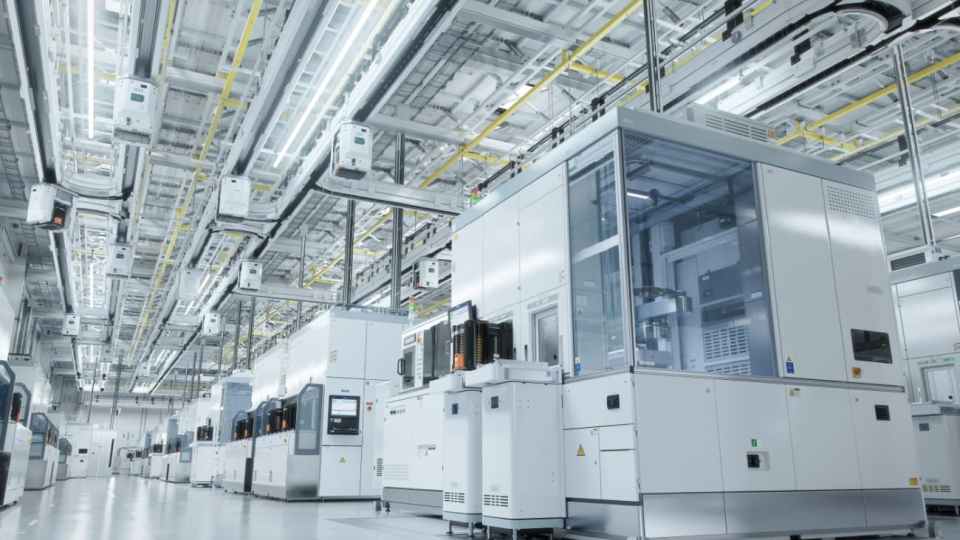Industrial Market Cools, But Long-Term Prospects Remain Robust
Early 2024 continues the trend of a slowdown in industrial space construction with only 20 million square feet initiated in the first two months of the year. Notably, this decline also follows a drop of approximately 40% in new construction starts between 2022 and 2023. Factors such as increased interest rates, stricter loan standards, normalizing demand, and economic uncertainty have contributed to the cooling of the industrial construction pipeline, which had reached record levels in 2021 and 2022. Meanwhile, as of the end of February, the national industrial supply under construction stood at 419.8 million square feet to make up 2.2% of the total stock, as detailed in the latest U.S. industrial market report from CommercialEdge.
Despite these short-term headwinds, two key trends are driving optimism for the industrial sector — the onshoring of manufacturing and the ongoing growth of e-commerce. In particular, domestic manufacturing is experiencing a significant resurgence, fueled by government initiatives like the 2022 CHIPS and Science Act. Accordingly, this is reshaping the U.S. industrial real estate market with 2024 construction projects heavily featuring manufacturing facilities — particularly those focused on electric vehicles and semiconductors, as exemplified by the Hyundai Plant in Georgia and Samsung’s facility in Texas.
Although e-commerce projects may be taking a temporary backseat to the manufacturing boom, the sector still boasts significant growth potential: Currently capturing around 16% of the retail market, e-commerce presents ample room for expansion in the industrial space.
Industrial Construction by Market
Turning to the distribution of industrial construction across U.S. markets, Phoenix leads the U.S. in industrial construction with 42.66 million square feet of under-construction space. This is nearly double the amount of its closest competitor, Dallas. Additionally, Phoenix holds the top spot for the percentage of existing stock under construction at 11.1%.
While the Phoenix pipeline dipped slightly from its record high of 57.6 million square feet in April 2023, the market remains robust. This is demonstrated by the substantial completion volume (29.1 million square feet) compared to new projects started (14.1 million square feet) in the last year. And, further solidifying Phoenix’s leading position is its exceptionally low vacancy rate of 3.2% — the lowest among Western markets.
In the South, Dallas boasts the second-highest volume of industrial space under construction in the U.S. at 27.33 million square feet, representing 2.9% of its existing stock. It’s worth noting here that Dallas defied the nationwide slowdown in 2023 by becoming the national leader in industrial completions: Last year, it delivered nearly 61.9 million square feet of new space that represented 6.6% of its existing stock — more than double the national average. As a result, this surge in new completions has caused Dallas’ vacancy rate to rise slightly to 4.7% for a 0.5% increase compared to January 2023.
At the same time, Charlotte, N.C., landed in third place for industrial developments underway with 13 million square feet under construction. This represents 4.1% of its existing industrial inventory to lead the South on a percentage-of-stock basis. Charlotte also boasts the lowest vacancy rate in the South at 3.1% and tied with Indianapolis for the third-lowest nationally. Here, all of Charlotte’s largest ongoing developments are either logistics parks or warehouses in mixed-use centers, which points toward continued potential in e-commerce.
Next in the ranks, we move to the Midwest, where Chicago ranked fourth nationally and leads the Midwest in industrial construction activity with 11.44 million square feet underway. While it is a significant volume, this represents only 1.3% of Chicago’s massive existing industrial stock, which exceeds 1 billion square feet.
Rounding out the top five is Kansas City, Mo., another key player in the Midwest with 11.25 million square feet of industrial space under construction. Demand in Kansas City remains strong with the lowest vacancy rate in the nation at just 2.25%. Its central location also offers access to 90% of the country within a two-day drive, making it a pivotal hub for industrial and logistics activities.
Other markets with considerable amounts of office space underway even amid a stabilization period for the industry are Memphis, Tenn. (#6 with 10.02 million square feet); Inland Empire, Calif. (#7 with 9.71 million); and Houston (#8 with 8.23 million).
See the complete CommercialEdge industrial report for more stats on development, occupancy, sales and more.

